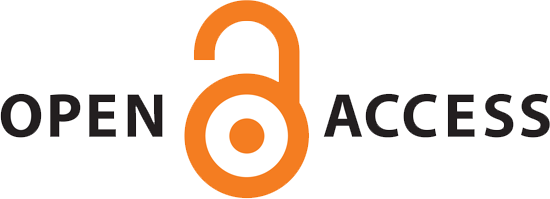Comparative Evaluation of Wedge and Field-in-Field Methods in Minimizing Brachial Plexus Radiation Dose in Breast Cancer Patients Undergoing Radiotherapy
Abstract
Background: Brachial plexopathy in breast cancer patients undergoing radiation therapy is an important side effect. The primary objective of this study was to compare the effectiveness and safety of two different treatment methods, the wedge method and field-in-field methods, in breast cancer patients undergoing radiotherapy. Specifically, the study aimed to evaluate the impact of these methods on the radiation dose received by the brachial plexus, a critical organ at risk in breast cancer treatment.
Methods: The study involved 100 breast cancer patients who underwent a series of 25 radiation therapy sessions. The total radiation dose administered throughout the therapy was 50 Gy, with each treatment session delivering 2 Gy. The study focused on measuring the radiation dose received by the brachial plexus. Two different methods, the wedge method, and the field-in-field process, were compared in terms of their ability to protect the brachial plexus from excessive radiation.
Results: The maximum dose delivered to the brachial plexus was 5302.18 cGy in the wedge group, and 5242.5 cGy in the field-in-field group. Although the field-in-field method appeared to be less risky, statistically there was no significant difference between the two methods (P > 0.05). Additionally, the mean dose delivered using the wedge method was 4169.98 cGy, while the field-in-field method had a mean dose of 4351.9 cGy and their difference was not statistically significant (P > 0.05).
Conclusion: The optimization of the treatment process is a crucial part of alleviating brachial plexopathy in breast cancer radiation therapy, and these dose measurements play a fundamental role in enhancing treatment protocols and improving patient comfort at the same time. It must be noted that even though the field-in-field technique decreased radiation exposure to the brachial plexus more than the wedge technique, further studies are still needed to determine the practical significance of these findings.
2- Arya Bhushan, Andrea Gonsalves, and Jyothi U Menon, "Current state of breast cancer diagnosis, treatment, and theranostics." Pharmaceutics, Vol. 13 (No. 5), p. 723, (2021).
3- Vincent Grégoire et al., "Image guidance in radiation therapy for better cure of cancer." Molecular oncology, Vol. 14 (No. 7), pp. 1470-91, (2020).
4- Icro Meattini, Matteo Lambertini, Isacco Desideri, Alex De Caluwé, Orit Kaidar-Person, and Lorenzo Livi, "Radiation therapy for young women with early breast cancer: current state of the art." Critical reviews in oncology/hematology, Vol. 137pp. 143-53, (2019).
5- Icro Meattini et al., "Breast reconstruction and radiation therapy: An Italian expert Delphi consensus statements and critical review." Cancer Treatment Reviews, Vol. 99p. 102236, (2021).
6- Andrea Cheville, Sean Smith, Touré Barksdale, and Arash Asher, "Cancer rehabilitation." Braddom's Physical Medicine and Rehabilitation, pp. 568-93. e7, (2021).
7- Soumon Rudra et al., "Radiation-induced brachial plexopathy in patients with breast cancer treated with comprehensive adjuvant radiation therapy." Advances in Radiation Oncology, Vol. 6 (No. 1), p. 100602, (2021).
8- Michael T Milano et al., "Hypofractionated Stereotactic Radiation Therapy Dosimetric Tolerances for the Inferior Aspect of the Brachial Plexus: A Systematic Review." International Journal of Radiation Oncology* Biology* Physics, (2023).
9- Franchesca König and Christian M Custodio, "Peripheral Nervous System Involvement in Breast and Gynecologic Cancers." in Breast Cancer and Gynecologic Cancer Rehabilitation: Elsevier, (2021), pp. 253-61.
10- Patrick Azzam, Manal Mroueh, Marina Francis, Alaa Abou Daher, and Youssef H Zeidan, "Radiation-induced neuropathies in head and neck cancer: prevention and treatment modalities." Ecancermedicalscience, Vol. 14(2020).
11- Kyle Wang and Joel E Tepper, "Radiation therapy‐associated toxicity: Etiology, management, and prevention." CA: A Cancer Journal for Clinicians, Vol. 71 (No. 5), pp. 437-54, (2021).
12- Dawn L Lovelace, Linda R McDaniel, and Dwynn Golden, "Long‐term effects of breast cancer surgery, treatment, and survivor care." Journal of midwifery & women's health, Vol. 64 (No. 6), pp. 713-24, (2019).
13- Sephora Nokhasteh, Hamideh Nazemi, Payman Hejazi, and Mahdieh Dayyani, "Comparison of dosimetric parameters between field in field and conformal radiation therapy techniques in early stage of left breast cancer patients." International Journal of Cancer Management, Vol. 12 (No. 2), (2019).
14- Alessia Tudda et al., "Knowledge-based multi-institution plan prediction of whole breast irradiation with tangential fields." Radiotherapy and Oncology, Vol. 175pp. 10-16, (2022).
15- Quanbin Zhang, Yu Zeng, Yingying Peng, Hui Yu, Shuxu Zhang, and Shuyu Wu, "Critical Evaluation of Secondary Cancer Risk After Breast Radiation Therapy with Hybrid Radiotherapy Techniques." Breast Cancer: Targets and Therapy, pp. 25-38, (2023).
16- Seraj Adin Zare, Maryam Bahador, and Samira Yazdani, "Comparison of Lung and Contralateral Scattered Breast Dose between Field-in-Field and Wedge Techniques in Patients with Early Breast Cancer." Frontiers in Biomedical Technologies, (2023).
17- Maryam Bahador, Mohamad Hasan Larizadeh, Mitra Samareh Fekri, Ahmad Naghibzadeh-Tahami, Mina Mohseni, and Fateme Arabnejad, "Investigation of Pulmonary Complications Induced by Radiotherapy and Chemotherapy in Patients with Breast Cancer through Spirometry, CT Scan Imaging Patterns, and Clinical Criteria in a Six-Month Follow-Up." Middle East Journal of Cancer, Vol. 13 (No. 4), pp. 692-700, (2022).
18- Michael Yan, Weidong Kong, Andrew Kerr, and Michael Brundage, "The radiation dose tolerance of the brachial plexus: a systematic review and meta-analysis." Clinical and Translational Radiation Oncology, Vol. 18pp. 23-31, (2019).
| Files | ||
| Issue | Vol 12 No 2 (2025) | |
| Section | Short Report(s) | |
| DOI | https://doi.org/10.18502/fbt.v12i2.18289 | |
| Keywords | ||
| Breast Cancer Radiation Therapy Wedge Field-in-Field Brachial Plexus | ||
| Rights and permissions | |

|
This work is licensed under a Creative Commons Attribution-NonCommercial 4.0 International License. |




